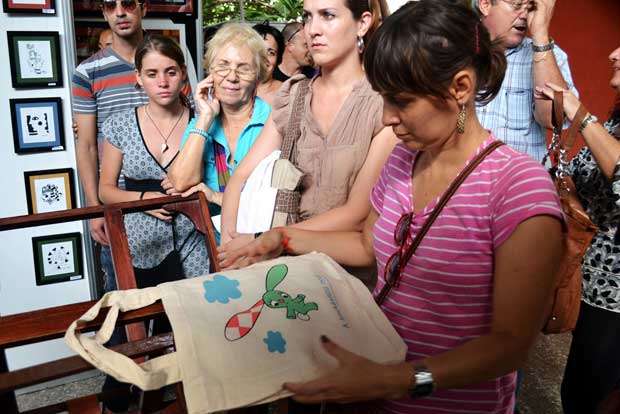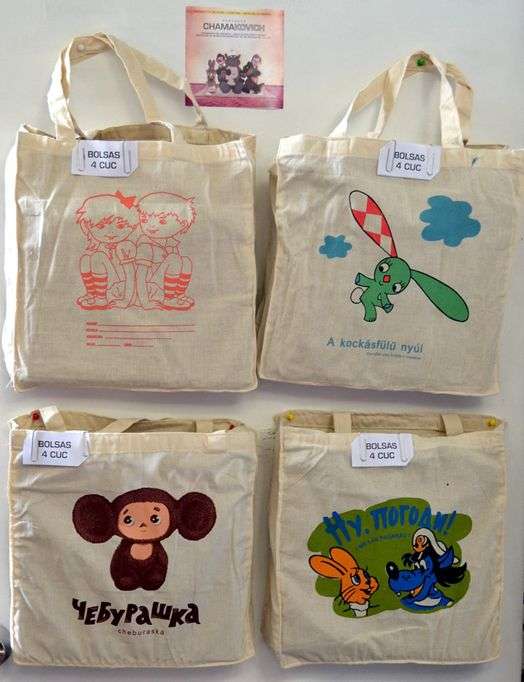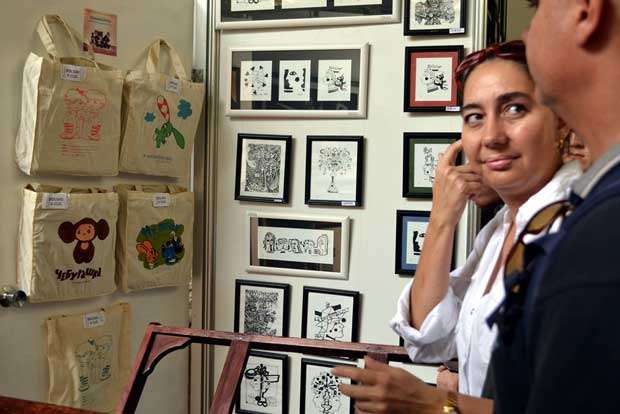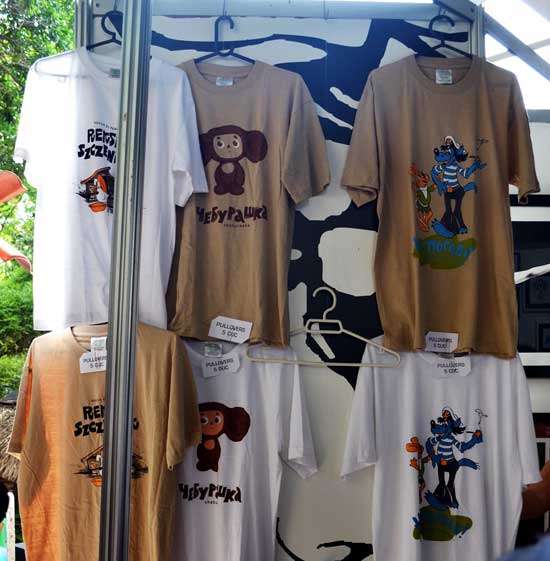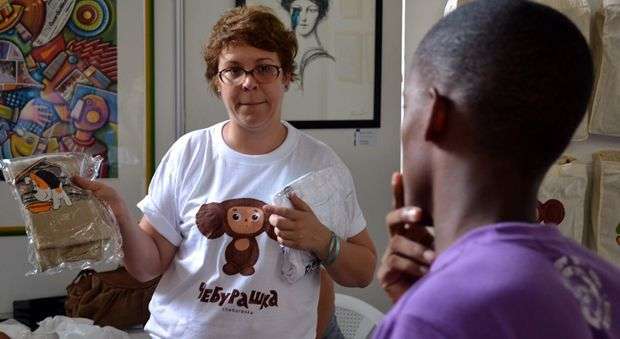Darwin Fornes is not too sure that creativity has to do with the times, while recognizing that circumstances do influence, and the current ones helped him realize an interesting idea: the Chamakovic Project …
An effective neologism that combines the very Cuban “chamaco” with Russian patronymic “kovic”, the very name of the project proposes a sentimental journey to the childhood of several generations of Cubans, especially those marked by maligned-and now longed-“Russian cartoons “…
Volk and Zayats (The wolf and the hare), Rex the dog, the insufferable Checkered Ears, Bolek and LOLEK and those two children sitting back to back in our old elementary books, televisions jump Caribbean Krimm and the tanktop and selling handmade crates at the trade Chamakovic Art in La Rampa.
The René Portocarrero printing workshop produced this Darwin’s idea, inspired by the popularity those cartoons still have and they were not all exactly Russians. It all began when Darwin joined a Facebook group that shared images of those characters, and found that they still even provoked emotions.
I thought that nostalgia could work, because it worked on me. It’s a whole social and generational phenomenon, there are blogs, communities, icons, and even surprise eggs have a line dedicated to those characters, Darwin told OnCuba, after the presentation of his project in the Pavellon Cuba.
The launch place has been more than favorable, because no fair like Art at La Rampa has such power to call, at the very heart of Vedado, with 80 stands which are all contemporary bazaar of private initiative. Since its inception 14 years ago, this summer space has become the undisputed market for more or less affordable art, besides being an agora of exchange between poets, readers, musicians and artists of all kinds.
Among the sponsors of this gigantic fair project are the Ministry of Culture, the Casa de las Americas, the Cuban Association of Artisans and Artists and Cuban Cultural Fund, accommodating and independent professionals who make a killing not only here, but also their July: queues don’t get any shorter, shopping either, and at least people walk and enjoy. Definitely, Cubans seem to like the trade
Darwin, born in 1984 and graduated five years ago as a graphic designer, believes times are good for business. At least he agrees with that economic openness Cuba is living in some way encourages creativity, especially in finding new niches for diversification of private initiatives and the rise of entrepreneurs.
In his case, he focused on adult audiences, particularly those born in the 60s, 70s and 80s of last century. In fact, in his there are not children’s sizes, knowing that kids today do not identify with those characters.
Beyond the popular imagination and the occasional reference in music and graphic arts, Soviet-style memorabilia was never exploited as Chamakovic does. Such merchandising only recently has been seen in the Cuban animated series Fernanda. Darwin goes back and recalls the paraphernalia items with Tocopán, mascot of the XI Pan American Games in Havana, 1991.
Among the main challenges he faced was reinventing the poses of the characters, or adapt to the flat printing one big ear three dimensional as Cheburaska filmed with stop-motion technique. Relive those years was very good, something emotionally intense, the creator said. Sure, it was not all for the love of it…
The Portocarrero Workshop has a social purpose: to produce and sell, but in the interest of maintaining a standard of quality and linked in cultural projects. Chamakovic was meant to furnish values, but it was sold too, with guarantees of success, said Darwin, also sponsored by Genesis Gallery.
Chamakovic was born as timely project for Art in La Rampa, but … will stay here or grow to resurrect other characters like Mikrovitsh, the Wizard Jotavish, Tusa Kutuza or combo Los Yoyo …?
Darwin just smiles and answers: that will depend on the acceptation, but I am not skeptical: nostalgia sells.
